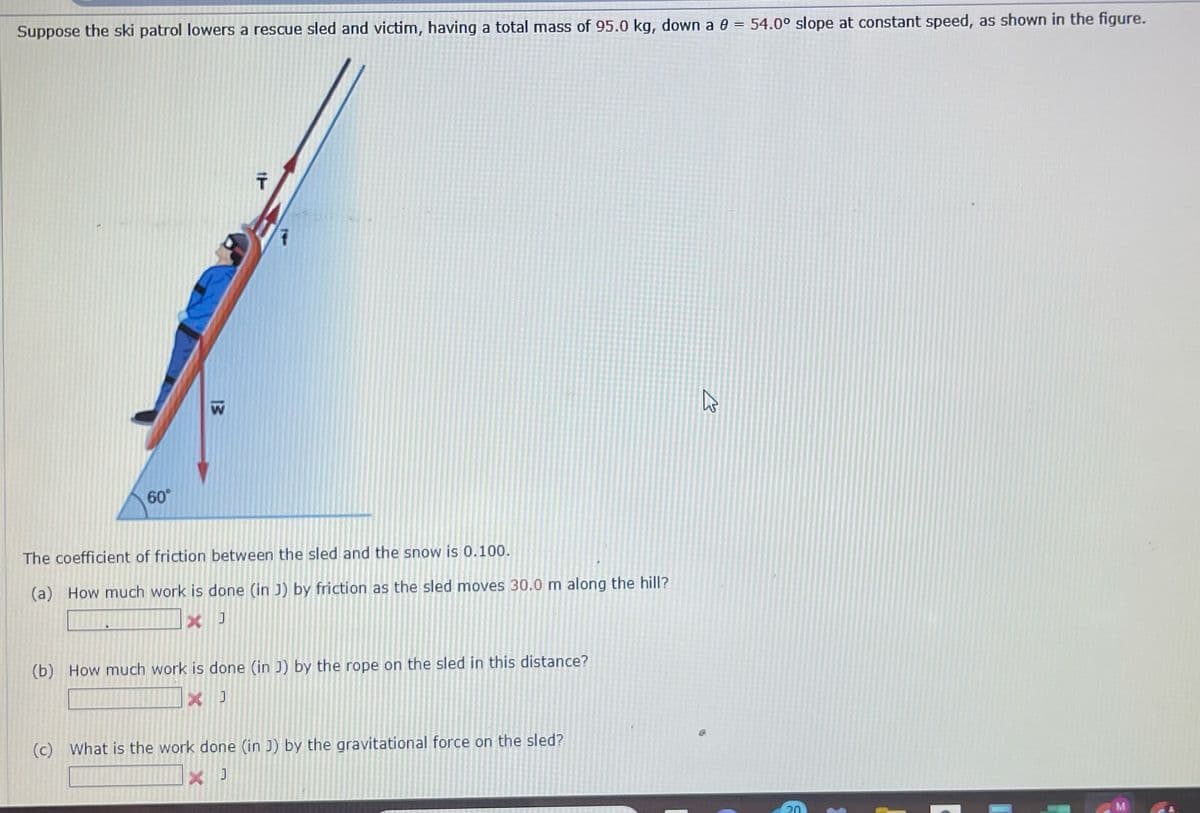Suppose the ski patrol lowers a rescue sled and victim, having a total mass of 95.0 kg, down a 0=54.0° slope at constant speed, as shown in the figure. 60 + The coefficient of friction between the sled and the snow is 0.100. (a) How much work is done (in J) by friction as the sled moves 30.0 m along the hill? (b) How much work is done (in J) by the rope on the sled in this distance? X J (c) What is the work done (in J) by the gravitational force on the sled? × J
Suppose the ski patrol lowers a rescue sled and victim, having a total mass of 95.0 kg, down a 0=54.0° slope at constant speed, as shown in the figure. 60 + The coefficient of friction between the sled and the snow is 0.100. (a) How much work is done (in J) by friction as the sled moves 30.0 m along the hill? (b) How much work is done (in J) by the rope on the sled in this distance? X J (c) What is the work done (in J) by the gravitational force on the sled? × J
Related questions
Question

Transcribed Image Text:Suppose the ski patrol lowers a rescue sled and victim, having a total mass of 95.0 kg, down a
54.0° slope at constant speed, as shown in the figure.
T
60°
13
13
The coefficient of friction between the sled and the snow is 0.100.
(a) How much work is done (in J) by friction as the sled moves 30.0 m along the hill?
× J
(b) How much work is done (in J) by the rope on the sled in this distance?
X J
(c) What is the work done (in J) by the gravitational force on the sled?
20
Expert Solution
This question has been solved!
Explore an expertly crafted, step-by-step solution for a thorough understanding of key concepts.
Step by step
Solved in 4 steps with 4 images
